Popular games published by company Mattel Electronics
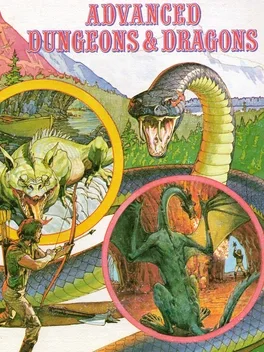
Intellivision's first ADVANCED DUNGEONS & DRAGONS title takes arrow-equipped warriors through winding caves in a quest to reach Cloudy Mountain and retrieve the Crown of Kings.
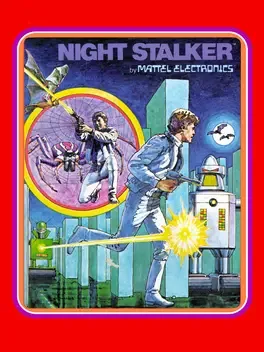
Night Stalker (released as "Dark Cavern" on Atari 2600) is a top-down maze shooter designed by Steve Montero and released for the Intellivision console in 1982. Night Stalker was ported to the Atari 2600 as Dark Cavern and released under Mattel's M Network label. Apple II and IBM PC versions were published in 1983. Robots, bats, and spiders chase you around a maze in Night Stalker, which boasts similar gameplay, if some what slower, to the arcade smash Berzerk. Players must pick up a gun that is randomly placed in the maze. The gun provides the player with a certain number of shots. Once depleted, the gun is again placed in a random part of the maze.
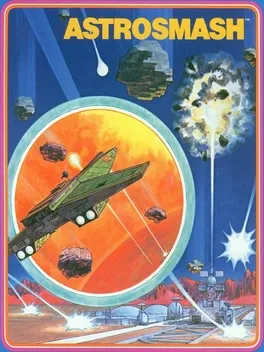
In Astrosmash you control a laser canon at the bottom of the screen; your goal is to earn as many points as possible by destroying the various incoming meteors, bombs, and other objects. Points are earned for destroying objects, while points are lost for letting them get past you. Meteors are the most common item you need to defend yourself against. They come in various sizes and colors, and some even split into two smaller meteors when shot. Mixed in with the meteors are white spinning bombs. While letting a meteor get past you will only lower your score, you have to shoot the spinners. If one gets past, you will lose a life. On the more difficult levels, ufo's and guided missiles will also appear occasionally and attempt to destroy your canon.
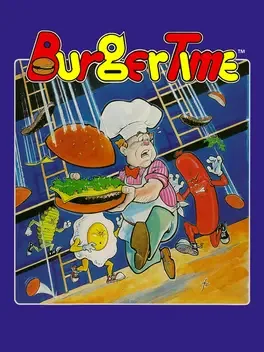
BurgerTime is a 1982 arcade game created by Data East for its DECO Cassette System. The game's original title, Hamburger, was changed to BurgerTime before its introduction to the US. The player is chef Peter Pepper, who must walk over hamburger ingredients located across a maze of platforms while avoiding pursuing characters. The game was popular in arcades. In the US, Data East USA licensed BurgerTime for distribution by Bally Midway. The Data East and Midway versions are distinguished by the manufacturer's name on the title screen and by the marquee and cabinet artworks.
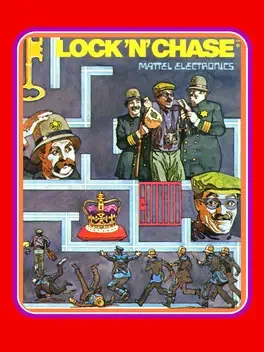
Lock 'n' Chase is a 1981 maze arcade game developed and published by Data East in Japan in 1981, and later published in North America by Taito. Lock 'n' Chase was Data East's response to Pac-Man. The game's main character is a thief. The object of the game is to enter a maze and collect all the coins and, if possible, any other treasure that may appear. The thief must then exit the maze (a vault) without being apprehended by the Super D (policemen). The thief can close doorways within the maze in order to temporarily trap the Super D and allow him to keep his distance from them. Only two doors can be closed at a time. The Super D policemen are named Stiffy, Scaredy, Smarty, and Silly.
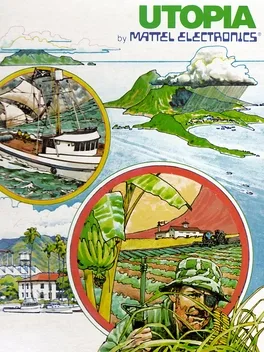
Utopia is a game played by two players on two continents. Players must build their island nation by building farms, housing, schools, hospitals, and factories and making other improvements while also competing against another player. Players are able to sabotage the other player as well, but they must also handle maintaining a fleet of PT boats to protect their fishing fleet, building forts to prevent rebellion, and dealing with the occasional hurricane. Utopia is considered by some to be the first city-building game, and an early ancestor of the real-time strategy genre.
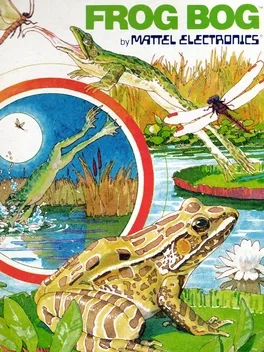
Frog Bog is a video game released by Mattel Electronics in 1982, developed by APH Technological Consulting. Players control a frog on a lily pad, competing to catch the most insects within a three-minute time limit. The challenge involves using the frog's tongue to capture flying insects while avoiding falling into the water, which would waste valuable time. The game features a dynamic day-night cycle that progressively makes insect catching more difficult as the background transitions from morning to night, adding complexity to the gameplay. The player with the most insects at the end of the time limit wins the game.
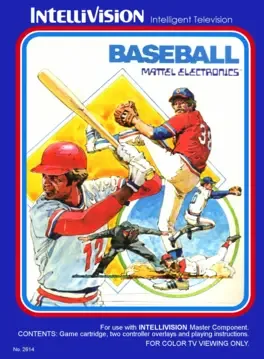
Major League Baseball is an action baseball game for two players. The game follows most professional baseball rules and allows you to control all of the players on the team. You can throw a variety of pitches (from curve balls to fast balls), steal bases, tag players out, bunt, try for a home run, and in the event of a tie the game goes into extra innings! Several difficulty levels are available which control the game speed and whether or not stealing bases is allowed.

Space Battle is a one-player game that pits you against the computer. Six alien fleets of different sizes are attacking your mothership, and it's up to you to defend it using your three squadrons. Alien ships will dodge your attacks and will attack you with photon blasts.
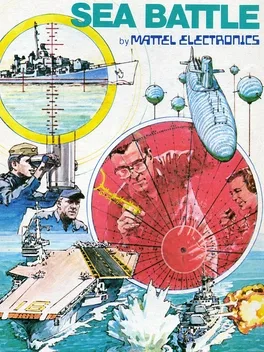
In Sea Battle, players must successfully invade the home port of their opponent while protecting their own ports from invasion. Game play takes place in an island-dotted ocean, with one player's home port at the lower-left corner of the screen and the other player's home port at the upper-right corner. Each player has access to thirteen naval vessels representing eight different ship types.[2] The player may organize these ships into smaller fleets, with a maximum of three ships per fleet and four fleets active at one time. Single-ship fleets are permitted, while larger fleets may not have two ships of the same type in one fleet. When fleets are deployed, the first ship selected as part of the fleet becomes its flagship.
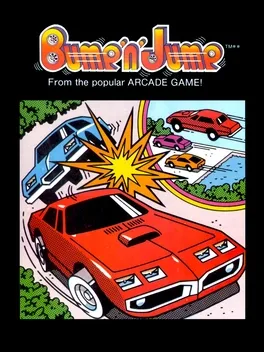
Bump 'n' Jump is an overhead-view vehicular combat game developed by Data East and originally released in Japan as "Burnin' Rubber". The arcade version was available as both a dedicated board and as part of Data East's DECO Cassette System. It was distributed in North America by Bally Midway. The goal is to drive to the end of a level while bumping enemy vehicles into the sides of the track and jumping over large obstacles such as bodies of water. The arcade game was a commercial success in Japan and North America. The game was ported to the Atari 2600, Intellivision, ColecoVision, Nintendo Entertainment System, and Sharp X1. The Famicom version of Burnin' Rubber was published as "Buggy Popper" in Japan in 1986.
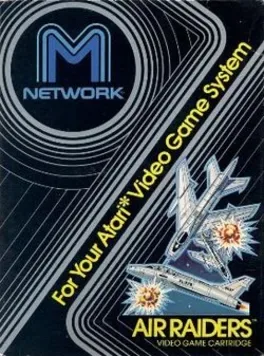
Air Raiders is an action game released for the Atari 2600 by Mattel in 1982. It received mixed reviews from critics. The player has the view of an airstrip as seen from the cockpit of a jet fighter. In order to start the launch, it is required that the player presses the fire button. When the player pulls back on the joystick, the jet fighter becomes airborne. A feature of the game includes a horizontal tilt that happens when the jet fighter turns to the left or the right for realistic simulation. The goal is to fire at enemy aircraft. The player also has to worry about not making a quick dive after an enemy craft that would lead to a crash landing. There is also a bar that is located on the width of the screen that allows the player to keep track of the horizontal position. It is important to stay out of heavy gunfire zones because it can lead to a nosedive crash. It is possible to pull out of a nosedive, but it would be a better idea for the player to avoid flak.
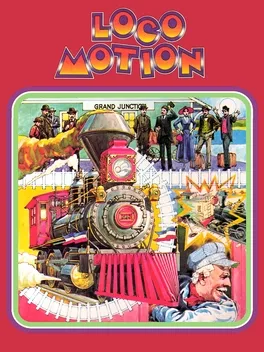
Loco-Motion is basically an updated version of a sliding block puzzle game where the player can move pieces horizontally or vertically within a frame to complete a picture. However, the presence of a constantly moving locomotive complicates matters. The player controls the playfield and the aim is to guide the locomotive around the tracks to collect the passengers waiting at the stations located around the edges of the screen. The player uses a joystick to slide a piece of the track into the vacant square. The locomotive is always moving, but the player has the option of making it move faster to get to the passengers more quickly by using a button next to the joystick. The player must avoid crashing the locomotive into the dead-end barricades (shown as a yellow 'X'), and also ensure that it does not run into the edge of the gap or a barrier at the playfield edge, either of which costs a life.
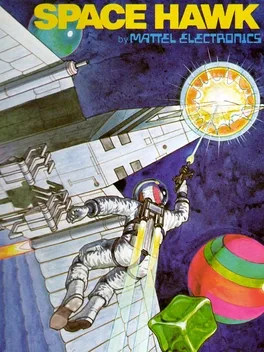
Imagine a hunter, alone in Deep Space. You control his movements. He's armed with a "gas blaster." His prime target is the white Space Hawk. If a Hawk, deadly gas bubbles, comets or amoebas touch the hunter, he tumbles into infinity! There are just three ways to escape: move out fast under backpack rocket power, shoot away the danger, or go into HYPERSPACE! The longer the game goes on, the more exciting it becomes, so... GET THE HAWK!
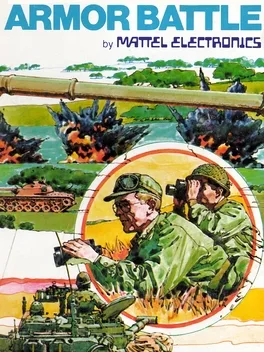
You are on a dangerous tank mission. To reach and destroy your assigned target, you must maneuver through a field filled with enemy mines. Although these are hidden, the mine detection equipment in your tank warns you of their presence by producing a buzzing sound. This is your signal to change course on route to your target. If you should stumble into a mine, your tank will be "destroyed" and returned to its original starting position. If you get through the minefield and successfully engage the target, the built-in computer will automatically set up another challenge with a new starting position, target location, and minefield.
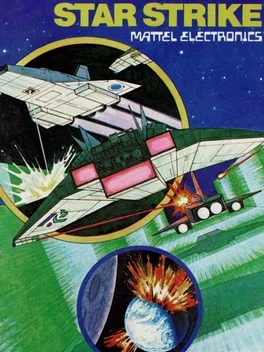
Launching from repair bay 28 of the Galatea, you guide your Blue Fighter Wing through the Launch Ring at lightspeed, entering enemy territory, sector Delta Five Niner! Your mission: Rescue the Orange Wing Center which was captured alive, before the enemy ingests his brain -- A brain which they consider to not only be an excellent source of protein, but also, once consumed, transfers all knowledge to the species - Including military secrets, vital to the survival of all mankind! Can you rescue your comrad & Destroy the opposing Protoid Forces?
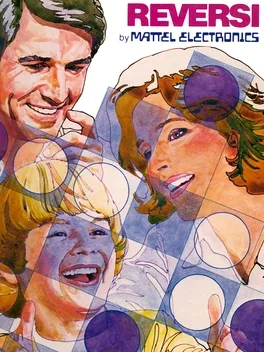
Reversi is a computerized version of the board game Othello. During the game, two players take turns placing game pieces on the board in an attempt to trap pieces of their opponents color. Any trapped pieces will then be reversed in color. When the board becomes completely filled up, whomever has the most pieces of his own color on the board wins. The game can be played by two players, or one player against the computer. There are three skill levels the computer can use, and three different board sizes are available, 6 by 6, 8 by 8, and 10 by 10.
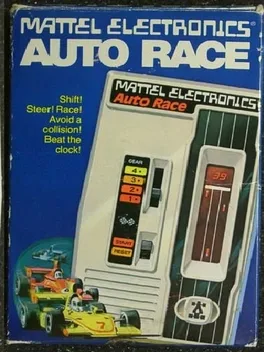
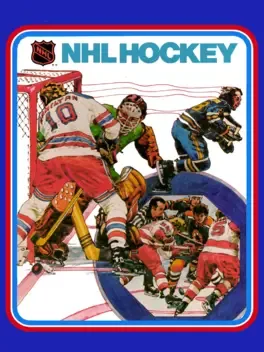
Licensed hockey game for the intellivision

Football was released in 1977. It was labelled either Football or Football I (after the release of Football II). Early models of Football had an AC Adapter jack which was removed on later models (which would only run on batteries). First released in June of 1977 as the second game released by Mattel (Auto Race was the first) and sold through Sears. After less than 100,000 were made, Sears (using a computer model based on initial sales figures) determined that the games would not be big sellers, and most of the production for Football and Auto Race was stopped. Within 6 months, it became obvious to Sears that their prediction was wrong, and production was started up again and reached previously unknown levels! (Reaching as many as 500,000 units a week by mid-February, 1978).
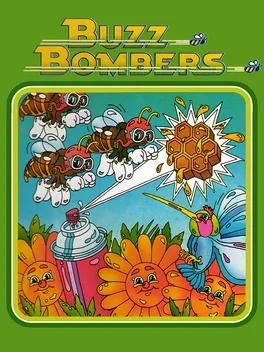
Buzz Bombers is an arcade action game similar to Centipede. You control a can of bug spray at the bottom of the screen, and you need to defend yourself from the swarms of incoming bees. The bees start at the top of the screen, and fly their way back and forth, slowly heading towards the bottom of the screen. If they reach the ground, they will pollinate the flowers there which causes them to grow and will restrict movement of your spray can. When you shoot a bee, it will turn into a honeycomb. The honeycombs will cause the bees to head towards the ground even faster, since they will turn around when one is in their way. Your spray can is able to shoot the honeycombs, but if you leave them in place a hummingbird will fly around and eat the honey from them. The more honey the hummingbird eats, the more points you get. The game ends when all of your spray cans are destroyed by growing flowers.
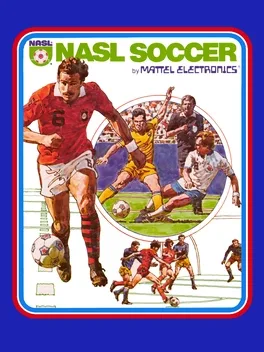
NASL Soccer is an action soccer game for two players. The game follows typical soccer rules; attempt to score more goals than your opponent in the two 45 minute periods (this is in simulated time). You control one player on your team at a time while the computer takes control of the rest. The game allows you to dribble and pass, and features throw ins, corner kicks, goal kicks, and in the event of a tie the game goes in to overtime! Several skill levels are available which control the speed of the game.